WHAT IS CIRCUIT TRAINING?
Circuit training is a workout process wherein there are several different stations to complete, one after another. This is different from doing multiple sets for the same body part to exhaust that muscle or muscle group.
Most gyms that I have been to encourage circuit training by positioning machines (Nautilus or similar) in sequence. Users are encouraged to do one set and move on, since others may be waiting in line. Generally, the progression is from machines that work the larger muscles to those for the smaller. For example, machines for the back or upper legs may precede those for the arms.
This routine is easily applicable to home workouts. You may complete a circuit very quickly and even do a second or third circuit if you wish. To quickly move through a circuit is to create an excellent aerobic workout, while exercising all or most of the muscle groups at the same time. If you choose, you may work more slowly and use heavier resistance for emphasis on muscle growth.
This differs from High Intensity Interval Training in that there is no lessening of resistance after the intense aspect. Also, high intensity is not a necessary component.
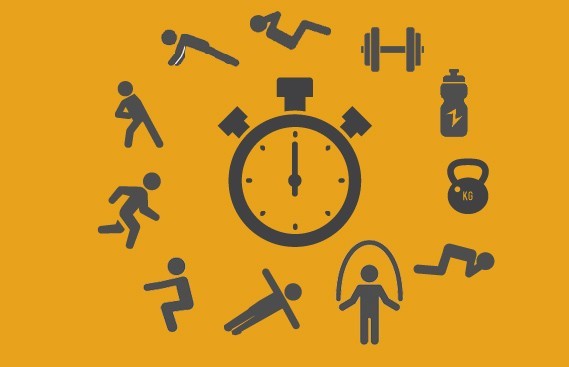
It seems to me that circuit training is more aptly suited for those who are beginning a training program and who simply want to get a good workout which includes both cardio and muscle building (or toning). These people are only seeking a path to follow. They are not professional athletes or bodybuilders.
A BODYWEIGHT ROUTINE
Circuit training at home will depend upon the equipment you have on hand, if any. Let’s begin with a routine that is based on bodyweight resistance only:
- WARM – UP – take 5 -10 minutes for jumping rope, doing jumping jacks or walking in place with high knees
- UPPER LEGS – squat for 10 – 12 reps. Push your backside back as you squat, feet and shoulders at same width
- LOWER BACK – with straight legs, bend over from waist to 45 degrees and return, 10- 12 reps
- CHEST – perform push – ups with wide hand spacing. Begin with knees on floor if necessary. Do 10 – 12 reps.
- ABDOMINALS / BACK – perform a plank with elbows on floor, lower body in a straight line. Go for one minute to begin.
- CALVES – place palms against a wall and stand back 4 feet. Raise and then lower heels for 20 reps.
- TRICEPS – back to push – ups, but with more narrow hand spacing. 10- 12 reps.
- ABDOMINALS – on floor, raise bent knees and upper body simultaneously so that elbows and knees almost meet. 10 – 15 reps.
In the program above, the push – ups are compound movements, working shoulders and back somewhat, while directly affecting pectorals and triceps. The entire body is worked by these 8 exercises, though the biceps get little stimulation. The suggestions for reps are not crucial. Do as many as you comfortably can.

LET’S ADD DUMBBELLS
Dumbbells are easily found and I will have some sources at the end of this section. Dumbbells are used to address specific muscles, as opposed to general muscle groups. Here is a circuit training routine that includes the use of dumbbells:
- WARM – UP – do 5 – 10 minutes. Jumping rope, jumping jacks or walking in place with high knees.
- UPPER BACK- raise dumbbell from arm’s length to side. Do both sides. See image below. 10 reps.
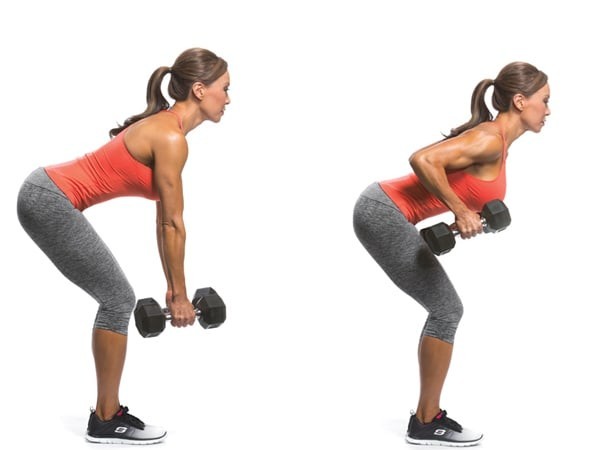
- UPPER LEGS – hold dumbbells at your shoulders as you bend knees into a squat. See below. 10 reps.
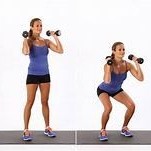
- CHEST – dumbbell bench press. See below. 10-12 reps
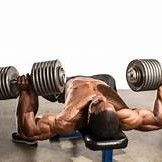
- ABDOMINALS – plank. See below. One minute.
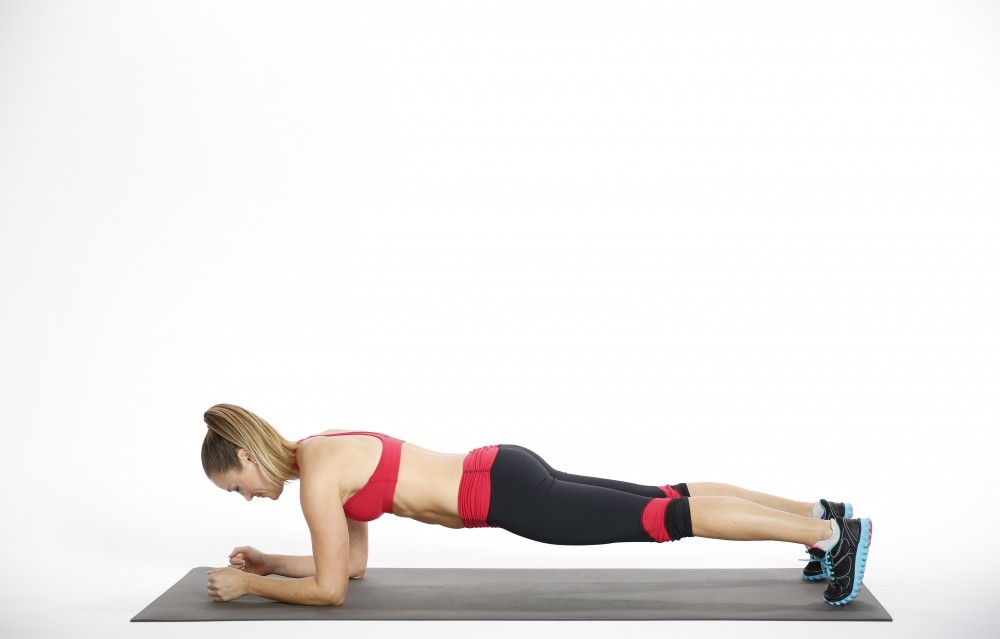
- CALVES – hold two dumbbells at shoulder level while standing erect, Raise and lower heels against the resistance. If possible, place the balls of your feet on a platform of 1 – 2 inches, for better flexion.
- BICEPS – see dumbbell curl illustrated below. This shows curls with alternating arms. Curls may also be done with both arms being raised at the same time or with one dumbbell working one arm at a time.
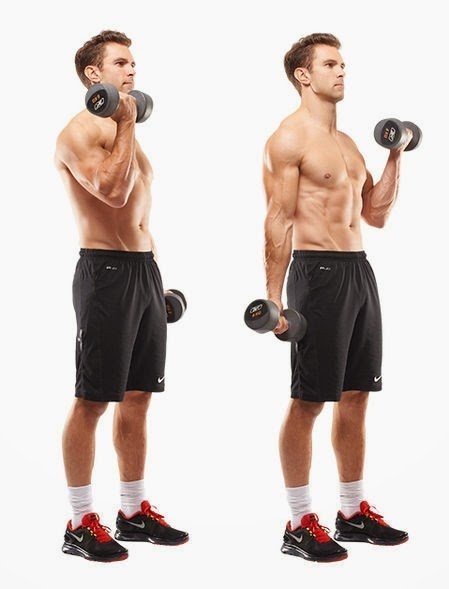
TRICEPS – while bending forward slightly and holding dumbbells at your sides, straighten arms at the elbows against the resistance. This is called the “triceps kickback”. See below. Do 10- 12 reps.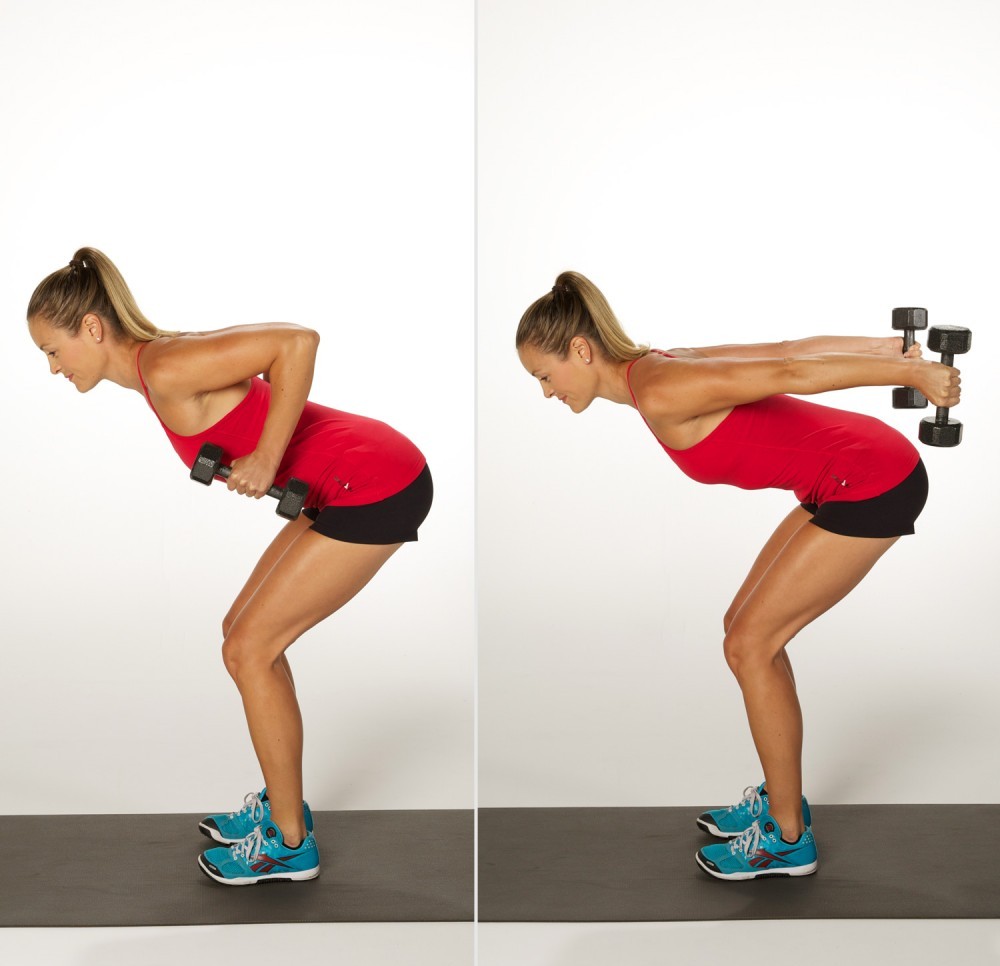
The above routine works most of the entire body. The deltoid muscles of the shoulders were not specifically addressed, but were worked somewhat in every one of the parts of the routine.
Here are a few dumbbell sources. These are Amazon links. As an Amazon associate, I may earn from qualifying purchases. Click on the links for descriptions:
5 – 20 lbs. weight per dumbbell
5, 10, 15, 20 and 25 lb. dumbbells
CONCLUDING
Circuit training is primarily a cardio form of exercise, since it emphasizes movement from one exercise to the next, without exhausting a body part in the process. Note that leg exercises may follow those for the upper body and vice versa. This means that such a program should not be done on consecutive days.
It seems to me that either the bodyweight or dumbbell routine should be completed in about 25 minutes after the warm – up. This means that a second circuit might be done, or even a third. Also, parts of the bodyweight program might be intertwined with parts of the dumbbell routine.
There are two other forms of resistance that might be used in a circuit training routine at home, as follows:
- RESISTANCE CORDS – these may be easily employed in a manner similar to the programs shown above. The middle of the cords may be attached to a closed door and be pulled or pushed by handles as needed. The middle may also be stepped upon so that handles may be pressed or curled upward. Here is a source for resistance cords
- BULLWORKER – Bullworker products are unique, in that they are relatively small and portable. They also provide significant resistance and hundreds of different exercises from which to build a circuit routine. Bullworker quality is excellent. Here is their site. With any Bullworker purchase, use this code for a 5 % discount – Hat5.
One final point – I have used all of the products shown by the links above and have also done all of the exercises described, at one time or another.
Please leave any questions or comments in the “Comments” box below. Or e-mail me, richard@myworkoutathome.com.
Be well!